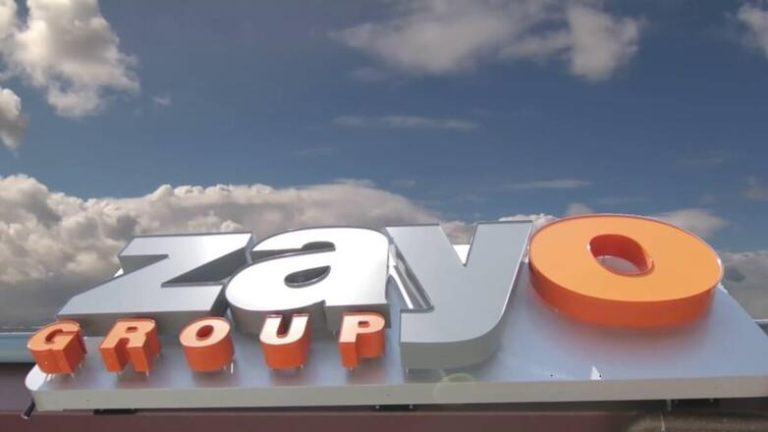In a significant move to meet the growing demands of AI and cloud computing, Zayo has completed its Umatilla-Prineville-Reno (UPR) long-haul fiber route, spanning 622 miles across the western United States. This new addition introduces one of the region’s AI-optimized network backbones, providing essential infrastructure to support rapidly expanding data center clusters in Oregon, California, and Nevada. The UPR route offers a geographically diverse alternative to the traditionally relied-upon I-5 corridor, positioning itself as a vital asset for hyperscalers and operators needing low latency, high resiliency, and ample capacity for AI-driven workloads.
A Backbone for the AI Economy
Zayo’s newly constructed fiber corridor is engineered specifically to handle the explosive growth of AI data traffic. With increasing demands for multi-terabit data capacity, the UPR route was designed with SMF-28 fiber, high fiber counts, multiple conduits, and 13 Zayo-owned in-line amplifier sites. This infrastructure ensures that the route can accommodate the demands of next-gen compute, which involves handling significant east-west data movement between data centers for AI training and inference.
By reducing reliance on existing network paths, the UPR route offers a more resilient and diverse path for AI, which requires synchronized compute across regions. This low-latency, high-capacity route will become essential for multi-cloud architectures and edge-to-core data flows that are key to AI’s expanding role in the economy.
Boosting Connectivity for Underserved Communities
Beyond its technical advantages, the UPR route also benefits underserved communities along the way. Zayo’s investment addresses longstanding gaps in middle-mile connectivity across the region, offering these communities better access to essential internet infrastructure. This move is particularly crucial as more companies and governments push for equitable access to high-speed fiber networks for future technological growth.
The route has been partially funded through the NTIA’s Middle Mile Grant Program, an initiative aimed at expanding high-speed internet access across the U.S. The UPR route will also bolster Zayo’s existing infrastructure, seamlessly integrating with its West Coast long-haul and subsea systems.
Zayo’s Long-Term Vision: 5,000 Miles of Fiber by 2030
Looking ahead, Zayo has laid out an ambitious plan to deploy 5,000 miles of new long-haul fiber by 2030, anticipating mounting bandwidth demands as AI continues to evolve. This strategic expansion aligns with Zayo’s mission to meet the rising demand for AI-driven workloads and large-scale compute across the U.S. and beyond. The company’s commitment to fiber expansion, with 19.5 million fiber miles deployed and 1,700 on-net data centers connected, underscores its role as a leading partner for hyperscalers and cloud providers.
Impact of AI on Telecom Infrastructure
As AI becomes more integral to business operations, the demand for AI-optimized networks continues to surge. Here are some key questions and answers surrounding AI’s influence on telecom infrastructure:
Why is AI driving demand for new long-haul fiber routes?
AI workloads require massive east-west data movement between data centers, demanding higher capacity and resilience than traditional network corridors can offer.
How does AI change latency requirements for network operators?
AI clusters depend on synchronized compute across multiple regions, requiring low and predictable latency to optimize training efficiency and workload distribution.
Why is path diversity becoming more important in the AI era?
Diverse network paths reduce the risk of disruptions to multi-region AI workloads. Path diversity improves overall network availability, which is critical in an increasingly connected world.
How does AI influence middle-mile investment strategies?
AI networks require higher fiber counts and redundant amplification sites, accelerating upgrades in middle-mile areas previously underserved by traditional infrastructure.
What role do hyperscalers play in shaping new route builds?
Hyperscalers often drive multi-terabit network requirements, working closely with telecom providers to design routes that support AI training clusters, inter-data-center fabrics, and future expansion needs.
Conclusion: The Future of AI-Optimized Telecom Infrastructure
Zayo’s Umatilla-Prineville-Reno fiber route represents a pivotal moment in the AI and cloud infrastructure landscape. With a focus on high-density, low-latency networks and sustainability, Zayo is positioning itself as a critical player in the growing AI economy. This new route and the company’s broader fiber expansion efforts reflect the urgent need for scalable, energy-efficient, and resilient telecom infrastructure to support the increasing demands of AI workloads. As AI continues to shape the future of digital transformation, the UPR route will be integral to driving the next generation of technological innovation.


